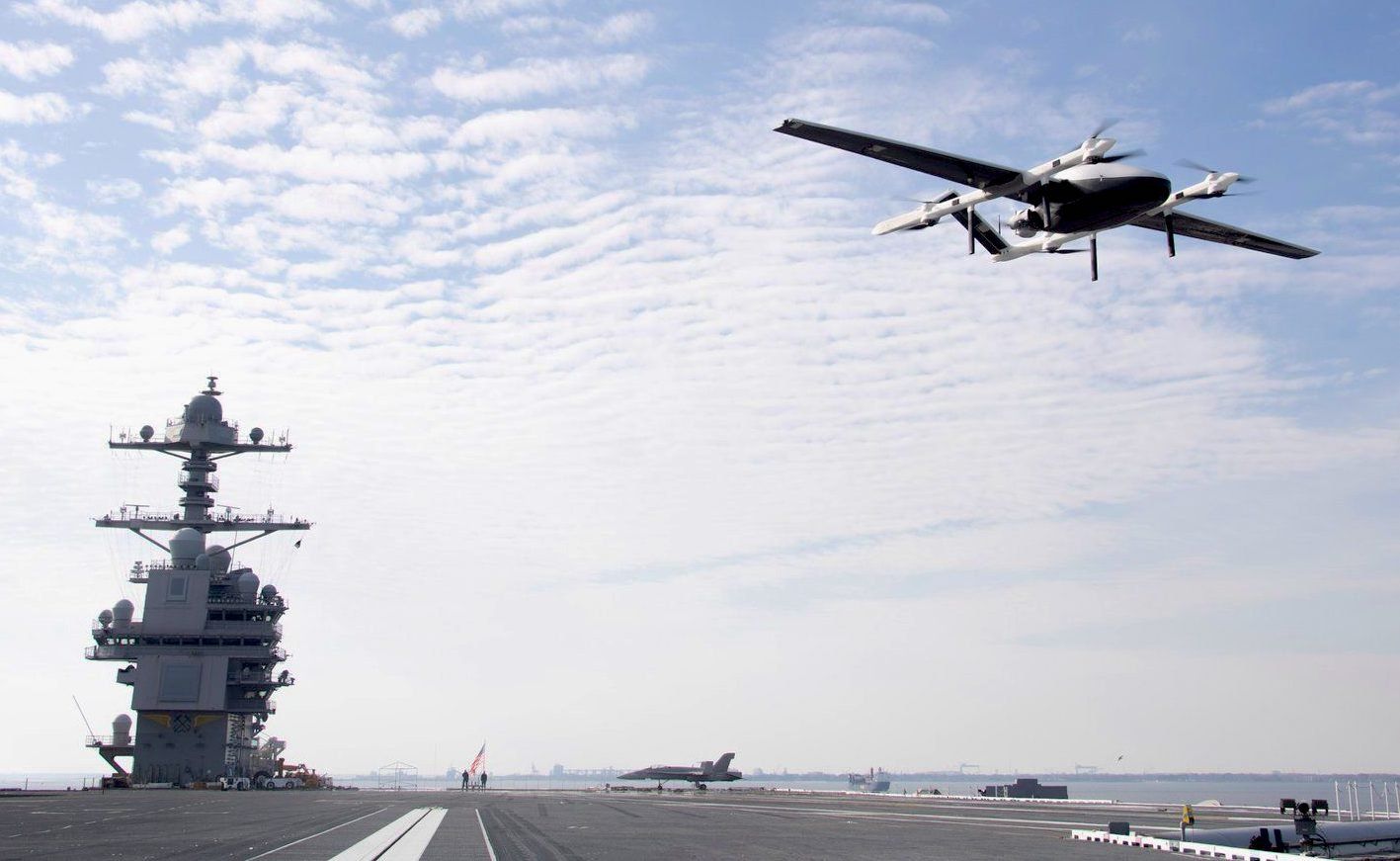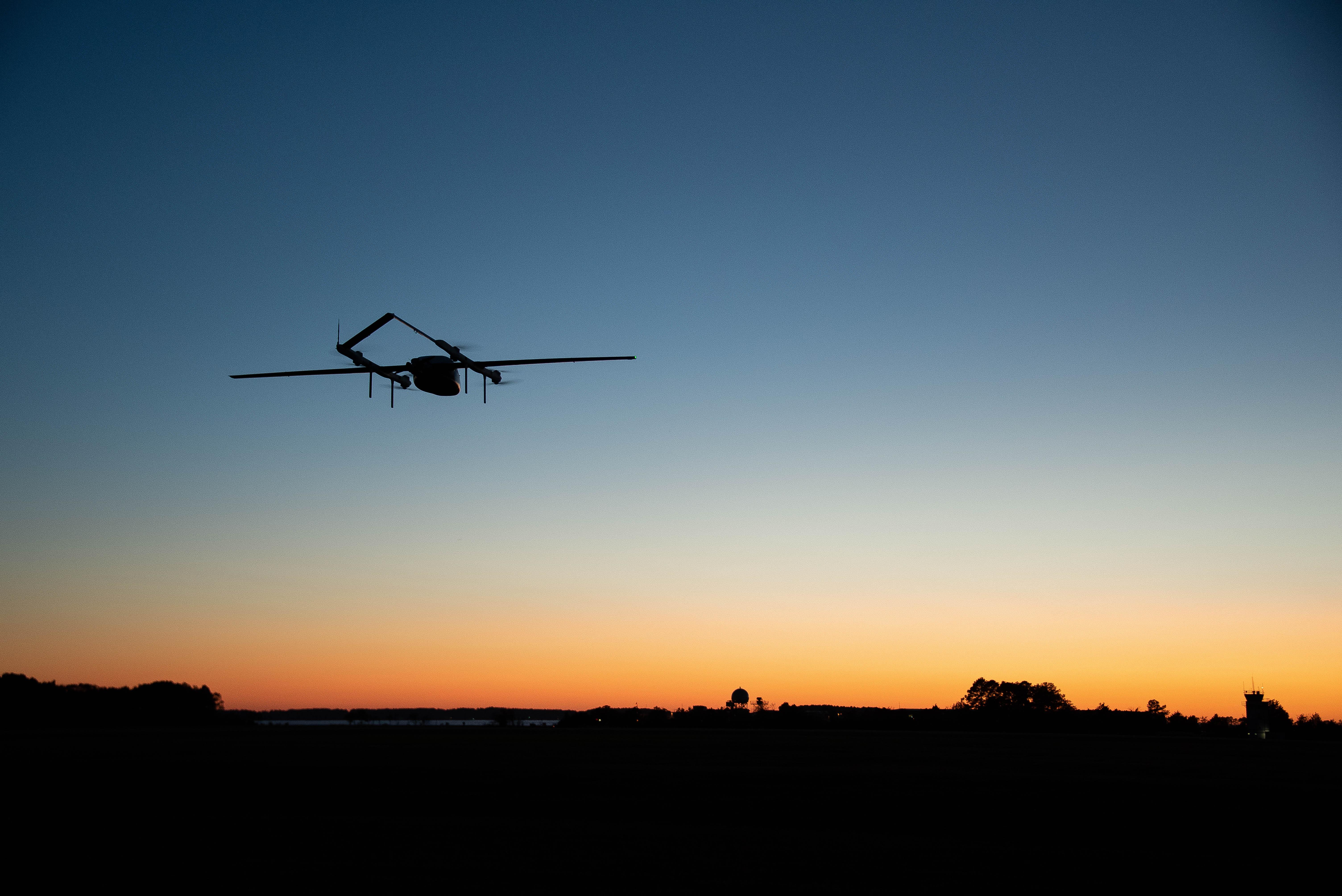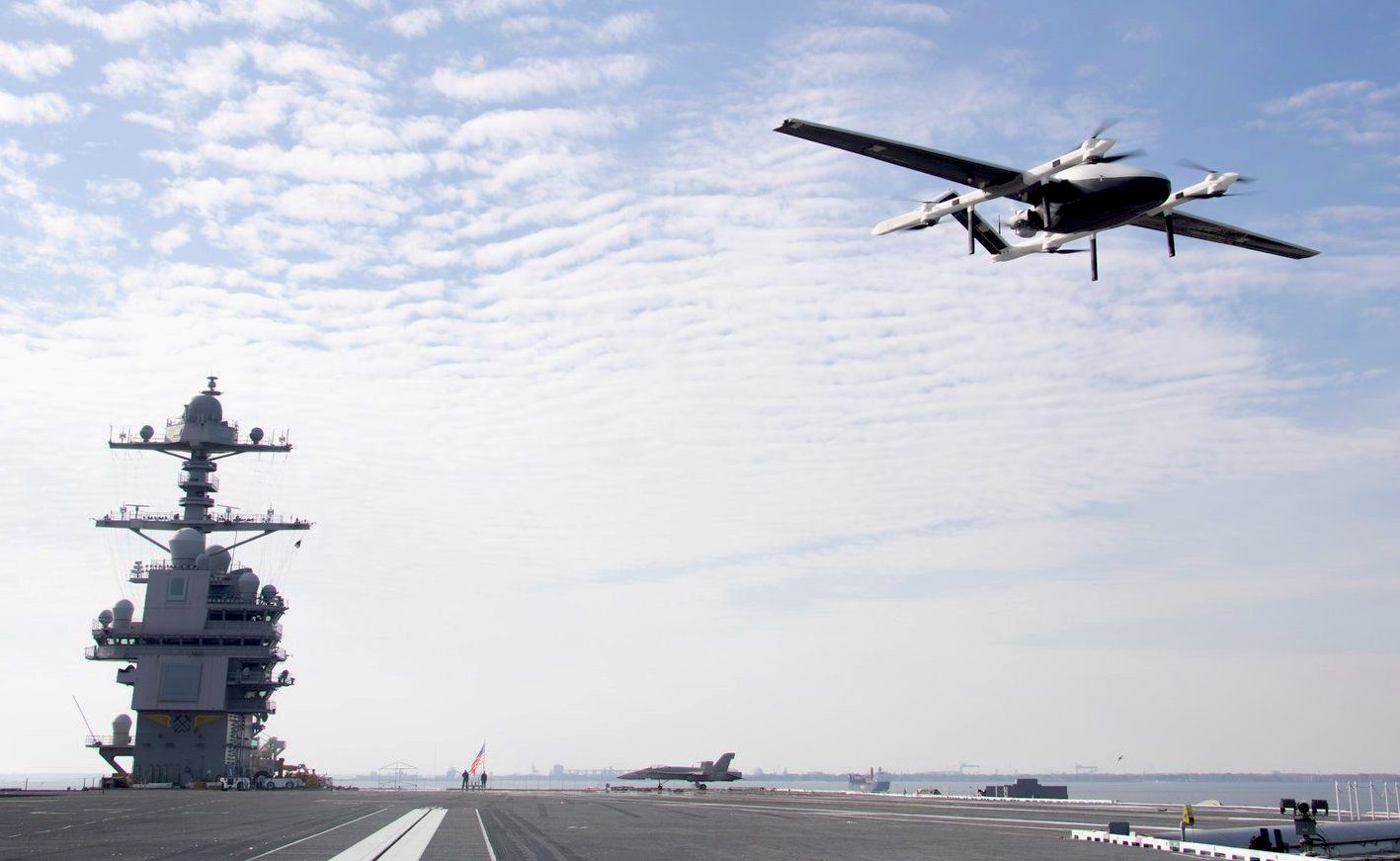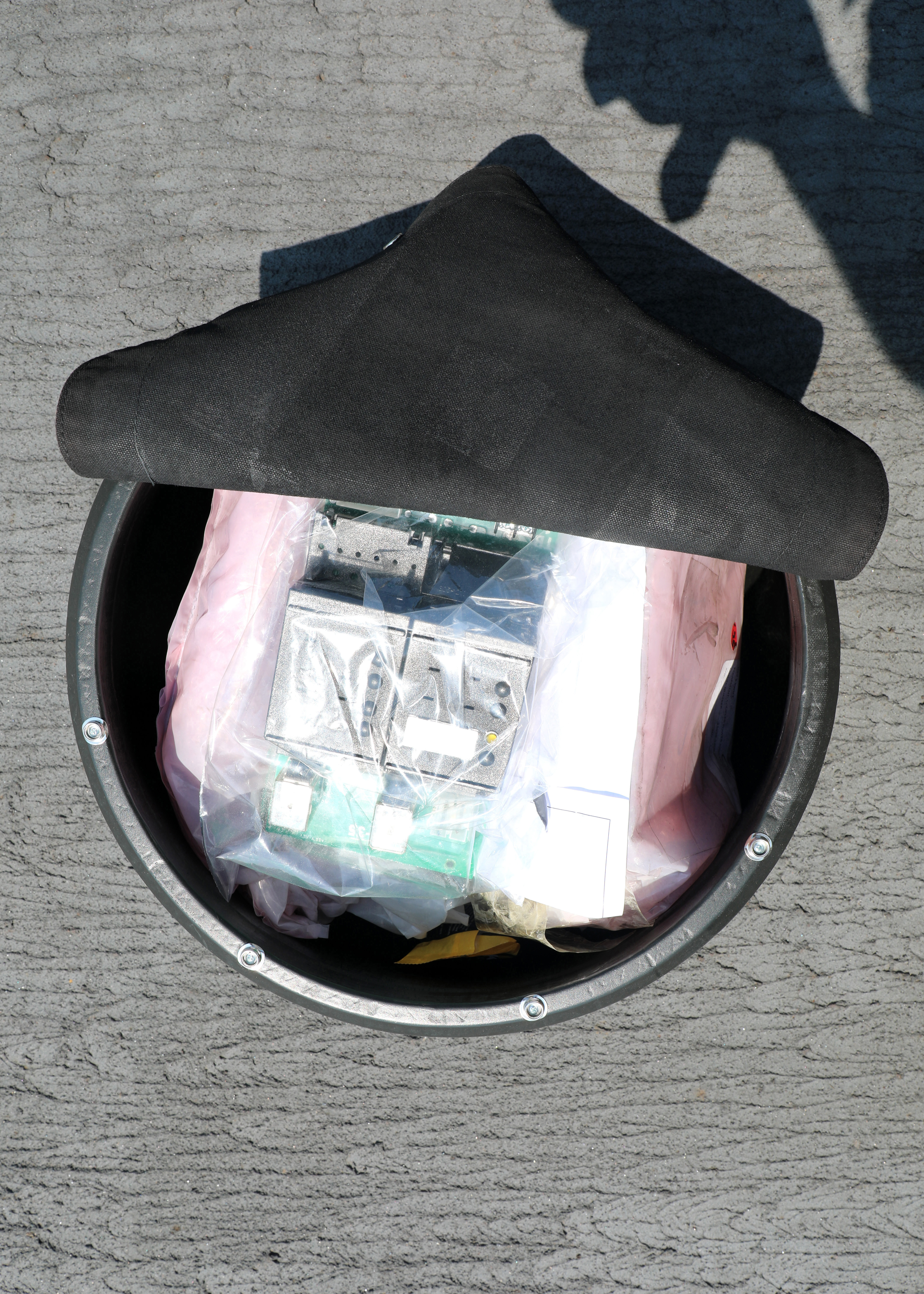The US Navy’s Naval Air Warfare Center Aircraft Division (NAWCAD) wants to introduce unmanned drone cargo delivery to the fleet. The service recently completed the first-of-its-kind at-sea demonstration, which involved the delivery of supplies to a moving ship.
AUKUS A ‘Booby-Trap’; Buying Nuke Submarines From The US A Big Mistake – Australian Military Veteran
The demonstration was carried out at an event at Naval Air Station Patuxent River in St. Inigoes, Maryland, according to the press release issued by the NAWCAD on December 21.
It involved multiple unmanned aerial systems (UAS) delivering cargo weighing less than 50 pounds (22.68 kilograms), constituting 90% of navy logistics deliveries.
Skyways Air Transportation, Inc. and Martin UAV developed the drones used in the demonstration. During the demonstration, they conducted ship-to-ship, ship-to-shore, and shore-to-ship flights over 200 nautical miles (370 kilometers).

These drones are capable of vertical-take-off-and-landing from most naval ships and therefore do not need dedicated equipment for launch and recovery.
“We see an increase in manned and unmanned logistics. For the Marine Corps, the Commandant is enthusiastic about where we are going with unmanned logistics and is beginning conversations about operations and contested environments. The Navy is currently identifying areas where unmanned logistics would be a critical enabler to operations at sea. The Blue Water Maritime Logistics UAS is a great demonstration of this emerging requirement,” said Col. Victor Argobright, PMA-263 program manager.
Historically, logistics-related issues like electronic parts or assemblies have often been the cause behind warships moving to non-mission capable or partially mission capable status, according to the data from the US Navy’s casualty reports.

Unmanned Drone Cargoes, Economical & Efficient?
Currently, tactical aircraft like the H-60 helicopter and V-22 tilt-rotor aircraft fly these missions. However, the service considers them less efficient and much more costly.
“Say you have a small component on radar, broken on an Aegis-class ship. We can now use an unmanned system to go from the big deck – whether it’s an MSC ship or from the carrier – out to a small boy in a relatively short amount of time, and we do not have to reschedule and recycle a helo,” Tony Schmidt, director of rapid prototyping, experimentation, and demonstration at NAWCAD, told USNI News in April 2022 at the Navy League’s annual Sea-Air-Space symposium.

“Instead of waiting for the next day to send the helicopter or for the next [underway replenishment], we can get that capability out literally within hours,” Schmidt said.
Therefore, recognizing the cost and inefficiency of using tactical aircraft in supply missions, the US Navy’s Military Sealift Command (MSC) division, responsible for delivering supplies to bases and ships worldwide, tapped NAWCAD to demonstrate an ability for an autonomous vehicle to fly these logistics missions.
So, the NAWCAD solicited the industry to demonstrate potentially viable platforms that existed commercially. In 2019, the NAWCAD acquired an electric Skyways V2.2 drone under the ‘Blue Water Maritime Logistics UAS concept’ for demonstrating long-range unmanned naval ship-to-ship and ship-to-shore cargo transport.

The drone features a tear-shaped body with four rotors and an aft propeller. It has wings and a peaked tail for forward flight and can carry a 20-pound (approximately nine kilograms) payload up to a range of 65 miles (104.6 kilometers).
Blue Water’s project lead, Bill Macchione, explained that the US Navy’s requirement is different from other cargo requirements that online retailers like Amazon are exploring, as Naval cargo transport requires vehicles that can successfully operate through challenging environments that include heavy winds, open water, and pitching vessels at sea.
The Blue Water concept underwent testing last year in February, aboard the carrier USS Gerald R Ford (CVN-78), for two weeks, delivering small packages representing spare parts and other necessary supplies in a carrier environment.

Following those tests, US Navy engineers and test pilots kept developing the technology, including enhancements in handling and ship storage, internal cargo carriage, advanced propulsion, navigation, collision avoidance, and landing systems.
After that, in July 2021, the service took the Skyways V2.2 drone and flew it ship-to-ship from the USS Bainbridge (DDG-96) to USNS Joshua Humphreys (T-AO-188).

“[For the future], we are looking at continued long-term experimentation, how the fleet operates, and how we get the technology out to our sailors,” said Schmidt in the NAWCAD’s press release.
In April, Schmidt told USNI News that plans are underway to deploy four unmanned aerial systems on an aircraft carrier for about two years and see how the fleet will use unmanned logistics.
He refused to divulge the carrier aboard which these unmanned logistics drones will be deployed, but reports suggest it could be either USS George HW Bush (CVN-77) or the USS Gerald R Ford.
- Contact the author at tanmaykadam700@gmail.com
- Follow EurAsian Times on Google News




